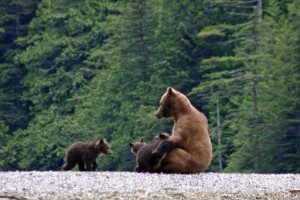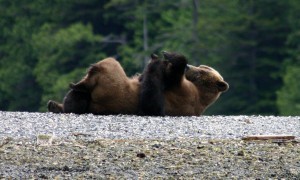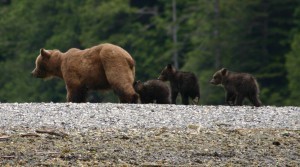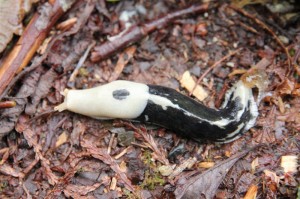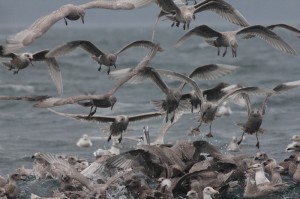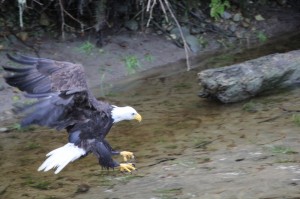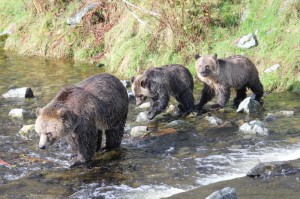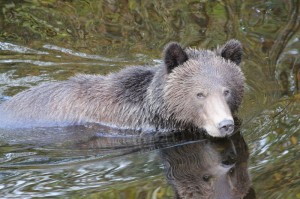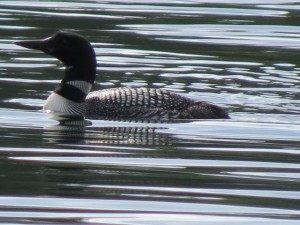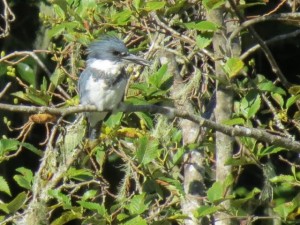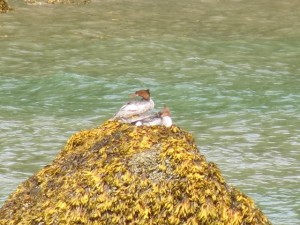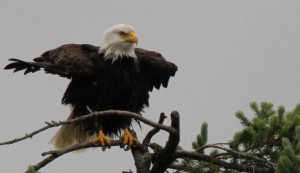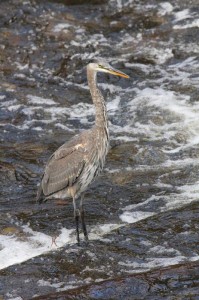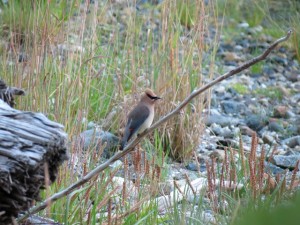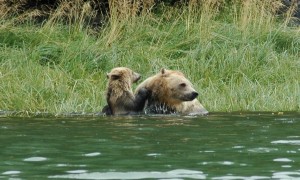
Mid-August can be quite warm in Knight Inlet’s Glendale Cove where we watch the grizzly bears as they come to the beach in search of food either protein from turning over rocks or the sedge grass that grows in the river estuary. The Cove is a one and a quarter hour boat ride from the lodge along the shore of Knight Inlet. The Glendale River mouth attracts grizzly bears that spend spring and summer feeding in the area and many are mothers with cubs. If you wore a fur coat in the summer you might want to spend some time in the water on a play date with mom. Marc & Solange visiting from France provided this photograph.
